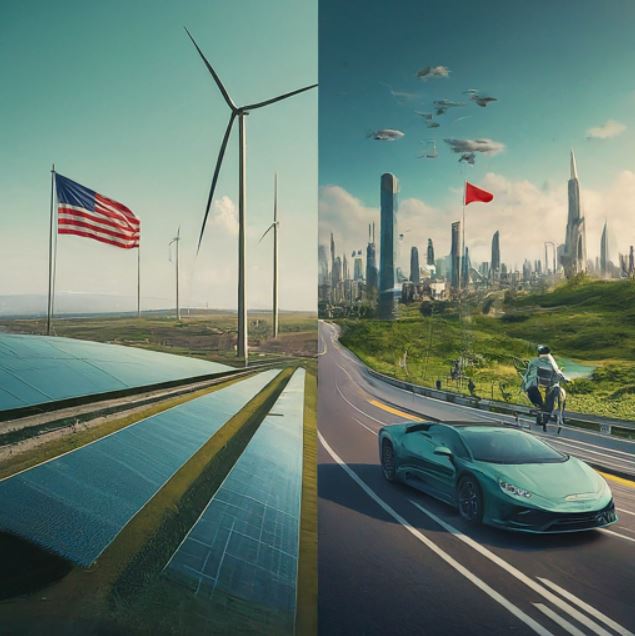The US-China trade war heats up with tariffs targeting electric vehicles and solar panels. Will this spur domestic innovation or hinder global clean energy progress?
 |
| Beyond tariffs, the US and China's battle for green tech supremacy could shape the future of clean energy. |
The US-China trade war has taken a sharp turn towards the green technology sector. In a recent move, the US government announced a series of hefty tariffs on Chinese imports, specifically targeting electric vehicles (EVs), solar cells, and lithium-ion batteries – crucial components for the clean energy revolution. This escalation aims to bolster domestic green industries and challenge China's dominant position in this rapidly growing market.
Targeted Disruption?
The US strategy focuses on crippling China's edge in EVs, the future of transportation. By quadrupling tariffs on imported Chinese EVs and raising levies on batteries and solar cells, the US hopes to incentivize American consumers to buy domestically produced alternatives. However, the effectiveness of this approach is debatable. Chinese EVs currently hold only a small share of the US market, making the direct impact of these tariffs on Chinese companies potentially limited.
The bigger concern for the US lies beneath the surface – China's control of the entire EV supply chain. From raw materials like lithium and cobalt to battery production and final vehicle assembly, Chinese companies dominate almost every stage. This dominance allows them to not only undercut prices but also potentially restrict access to critical components for US manufacturers. The new tariffs aim to disrupt this dominance by encouraging domestic production across the entire EV ecosystem.
Backdoor Maneuvers and Doubts of Success
China, however, is no stranger to trade wars. In response to previous US tariffs, Chinese companies have become adept at rerouting their supply chains through third-party countries with existing free trade agreements with the US. Countries like Vietnam, Malaysia, and Thailand have emerged as key players in this "backdoor" strategy, allowing Chinese goods to enter the US market with minimal additional costs. This raises concerns about the long-term effectiveness of the current US tariffs.
Furthermore, history offers cautionary lessons. Previous US tariffs on Chinese solar panels, while initially reducing imports, failed to revitalize the domestic solar industry. Instead, Chinese dominance in the sector grew even stronger. This raises doubts about whether the current strategy will achieve its intended outcomes.
The Rise of Industrial Policy
The US-China trade war transcends simple tariffs. It represents a clash between two distinct economic philosophies. The US has traditionally championed free markets, advocating minimal government intervention. However, faced with China's aggressive industrial policy – a system of government subsidies, directed investments, and strategic planning – the US is adopting its own version. The recently passed Inflation Reduction Act allocates nearly $400 billion in subsidies aimed at boosting the US cleantech sector.
This shift towards industrial policy exposes a hypocrisy in the US approach. While criticizing China's "unfair" subsidies, the US is overlooking its own significant investments under the Inflation Reduction Act. This inconsistency weakens the US argument and could further strain relations with China.
The Road Ahead: A Global Green Race?
The US-China trade war's green tech chapter is far from over. The effectiveness of the latest US tariffs remains to be seen, and China is likely to develop counter-measures. This back-and-forth could have unintended consequences, potentially hindering global progress towards clean energy goals.
However, there's also a potential silver lining. The competition between the US and China could accelerate the development and deployment of clean technologies. Increased investment in research and development, coupled with a race to reduce production costs, could lead to faster innovation and more affordable clean energy solutions for everyone.
The future of the green tech landscape hinges on how this US-China rivalry unfolds. Will it devolve into a protectionist quagmire, or can it foster global collaboration and a faster transition to a sustainable future? Only time will tell.